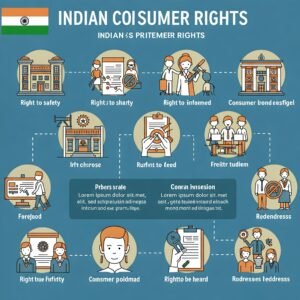-Justice Gavai, who is currently serving as a judge of the Supreme Court, will assume his new role from May 14.
New Delhi. Justice BR Gavai will become the 52nd Chief Justice of the country. President Draupadi Murmu has approved this. Bhushan Ramakrishna Gavai will take oath as the Chief Justice of India on May 14, 2025 and take office. Law and Justice Minister Arjun Ram Meghwal gave this information by posting on X.
President Draupadi Murmu has approved Justice BR Gavai as the 52nd Chief Justice of India. He will take office on May 14. Regarding this, Law and Justice Minister Arjun Ram Meghwal posted on the social media platform X and said that this appointment has been made under the powers vested by the Constitution of India. Justice Gavai will assume his new role from May 14, who is currently serving as a judge of the Supreme Court.
Current CJI Sanjiv Khanna will retire on May 13
Current Chief Justice of the Supreme Court Sanjiv Khanna will retire on May 13. BR Gavai will hold the post of CJI for about 6 months, as he will retire in November 2025. Justice BR Gavai has been part of the 5-judge Constitution Bench, which upheld the decision to repeal the provisions of Article 370 giving special status to Jammu and Kashmir in December 2023.
Introduction of Justice BR Gavai
Justice BR Gavai was born on 24 November 1960 in Amravati, Maharashtra. He started practicing law in the Bombay High Court in the year 1987. He has worked with former Advocate General and High Court Judge Late Raja S. Bhonsale. He was appointed Assistant Government Advocate and Additional Government Prosecutor in the Nagpur Bench of the Bombay High Court in August 1992. In the year 2000, he became Government Advocate and Government Prosecutor.
Justice Gavai has taken part in many important and landmark judgements during his tenure in the Supreme Court. Below are some of his major judgements:
Validating Demonetisation (2016):
Justice Gavai was part of the five-judge Constitution Bench in January 2023, which by a majority of 4:1, upheld the decision of the Central Government to demonetise Rs 500 and Rs 1000 notes. He said that the decision was taken after consultation between the Central Government and the Reserve Bank of India and it meets the ‘proportionality test’.
Supporting the repeal of Article 370:
In December 2023, Justice Gavai was part of the five-judge Constitution Bench, which unanimously upheld the decision of the Central Government to repeal the provisions of Article 370 giving special status to Jammu and Kashmir.
Declaring Electoral Bond Scheme unconstitutional:
Justice Gavai was part of the Constitution Bench that struck down the Electoral Bond Scheme for political funding. The judgment sparked significant debate over transparency in political funding.
Ban on Bulldozing Action:
In November 2024, a two-judge bench headed by Justice Gavai criticised the practice of bulldozing the properties of accused or convicts without due process of law. He termed it unconstitutional and said that it is mandatory to give notice and at least 15 days’ time before demolishing any property.
Sub-classification and Creamy Layer in SC/ST Quota:
Justice Gavai supported the judgment allowing sub-classification for Scheduled Castes (SCs) and Scheduled Tribes (STs). He said that true equality requires the identification of ‘creamy layer’ in these communities. He compared it to the struggle for a seat in the general coach of a train.
Stamp Act Judgement:
Justice Gavai was part of a seven-judge bench that unanimously ruled that agreements with unstamped or insufficient stamps are not admissible under the Stamp Act. If the stamp duty is not paid, the agreement will be deemed invalid.
Environmental Protection:
Justice Gavai said in an environment-related case that “development is necessary, but the price of it cannot be the destruction of nature.” This judgment came when the government transferred forest land for industrial projects.
Hyderabad Forest Protection:
Justice Gavai took a tough stand in the case of destruction of 100 acres of forest in Kancha Gachibowli, Hyderabad, which promoted environmental protection. These judgments reflect Justice Gavai’s balanced and influential approach to constitutional, social, and environmental issues. His judgments have not only set legal precedents but also strengthened social justice and democratic values.


 भारतीय उपभोक्ताओं के अधिकार “उपभोक्ता संरक्षण अधिनियम, 2019” के तहत परिभाषित किए गए हैं। यह अधिनियम उपभोक्ताओं को विभिन्न अधिकार प्रदान करता है ताकि वे अनुचित व्यापार प्रथाओं और शोषण से सुरक्षित रहें। नीचे इन अधिकारों को संक्षेप में बताया गया है:
भारतीय उपभोक्ताओं के अधिकार “उपभोक्ता संरक्षण अधिनियम, 2019” के तहत परिभाषित किए गए हैं। यह अधिनियम उपभोक्ताओं को विभिन्न अधिकार प्रदान करता है ताकि वे अनुचित व्यापार प्रथाओं और शोषण से सुरक्षित रहें। नीचे इन अधिकारों को संक्षेप में बताया गया है: rights to consumers so that they are protected from unfair trade practices and exploitation. These rights are briefly explained below:
Right to Safety: Consumers have the right to be protected from goods and services that may be harmful to their life, health or property. For example, protection from substandard products.
Right to Information: Consumers have the right to be fully informed about the quality, quantity, purity, standard and price of any goods or services so that they can make an informed decision.
Right to Choose: Consumers have the right to choose the goods or services of their choice from a variety of options. This means that they cannot be forced into monopolistic or limited choices.
Right to be Heard: If a consumer has a complaint, he has the right to present his case at the appropriate forum (such as a consumer court) and get a fair hearing.
Right to Redressal: A consumer has the right to seek compensation or damages against unfair trade practices or defective goods/services. This may include replacement of goods, refund or compensation.
Right to consumer education: Consumers have the right to be aware and educated about their rights and responsibilities so that they can avoid exploitation.
Some important points:
Consumer grievance redressal: Consumers can file their complaints with the District, State or National Consumer Commission, depending upon the value and area of complaint.
Example: If a shopkeeper charges wrong price or sells fake goods, the consumer can take action against him.
rights to consumers so that they are protected from unfair trade practices and exploitation. These rights are briefly explained below:
Right to Safety: Consumers have the right to be protected from goods and services that may be harmful to their life, health or property. For example, protection from substandard products.
Right to Information: Consumers have the right to be fully informed about the quality, quantity, purity, standard and price of any goods or services so that they can make an informed decision.
Right to Choose: Consumers have the right to choose the goods or services of their choice from a variety of options. This means that they cannot be forced into monopolistic or limited choices.
Right to be Heard: If a consumer has a complaint, he has the right to present his case at the appropriate forum (such as a consumer court) and get a fair hearing.
Right to Redressal: A consumer has the right to seek compensation or damages against unfair trade practices or defective goods/services. This may include replacement of goods, refund or compensation.
Right to consumer education: Consumers have the right to be aware and educated about their rights and responsibilities so that they can avoid exploitation.
Some important points:
Consumer grievance redressal: Consumers can file their complaints with the District, State or National Consumer Commission, depending upon the value and area of complaint.
Example: If a shopkeeper charges wrong price or sells fake goods, the consumer can take action against him.

